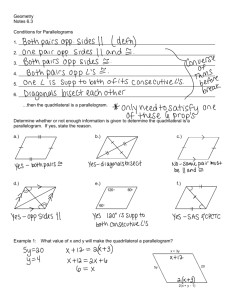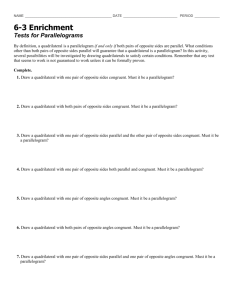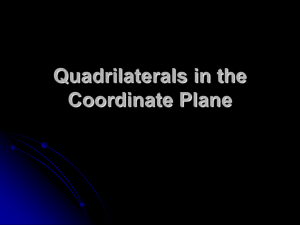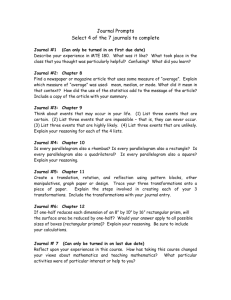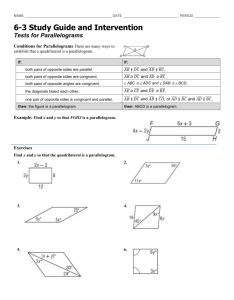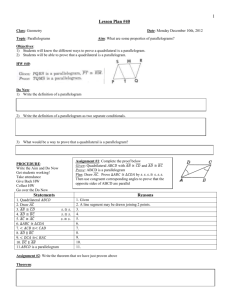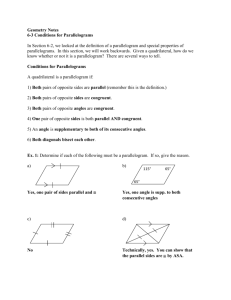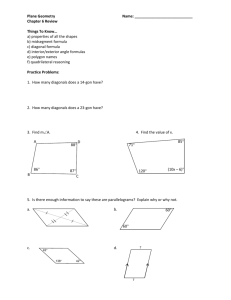Conditions for Parallelograms 1
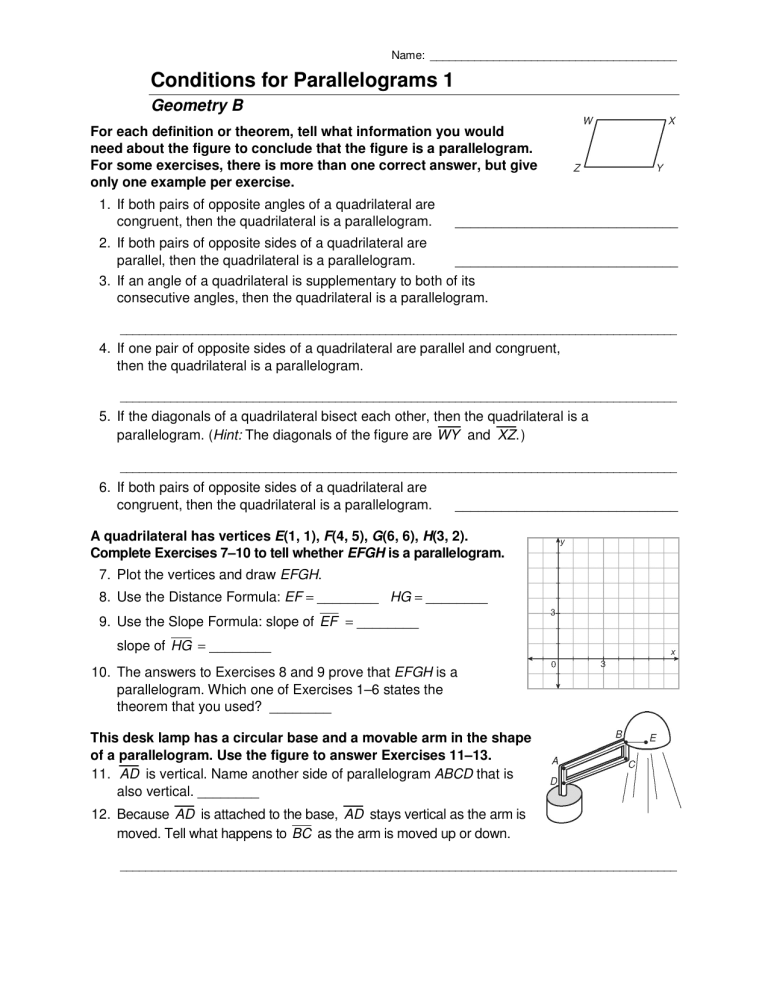
Name: _______________________________________
Conditions for Parallelograms 1
Geometry B
For each definition or theorem, tell what information you would need about the figure to conclude that the figure is a parallelogram.
For some exercises, there is more than one correct answer, but give only one example per exercise.
1. If both pairs of opposite angles of a quadrilateral are congruent, then the quadrilateral is a parallelogram. _____________________________
2. If both pairs of opposite sides of a quadrilateral are parallel, then the quadrilateral is a parallelogram. _____________________________
3. If an angle of a quadrilateral is supplementary to both of its consecutive angles, then the quadrilateral is a parallelogram.
________________________________________________________________________________________
4. If one pair of opposite sides of a quadrilateral are parallel and congruent, then the quadrilateral is a parallelogram.
________________________________________________________________________________________
5. If the diagonals of a quadrilateral bisect each other, then the quadrilateral is a parallelogram. ( Hint: The diagonals of the figure are WY and XZ .
)
________________________________________________________________________________________
6. If both pairs of opposite sides of a quadrilateral are congruent, then the quadrilateral is a parallelogram. _____________________________
A quadrilateral has vertices E (1, 1), F (4, 5), G (6, 6), H (3, 2).
Complete Exercises 7–10 to tell whether EFGH is a parallelogram.
7. Plot the vertices and draw EFGH .
8. Use the Distance Formula: EF
=
________ HG
=
________
9. Use the Slope Formula: slope of EF
=
________
slope of HG
=
________
10. The answers to Exercises 8 and 9 prove that EFGH is a parallelogram. Which one of Exercises 1–6 states the theorem that you used? ________
This desk lamp has a circular base and a movable arm in the shape of a parallelogram. Use the figure to answer Exercises 11–13.
11. AD is vertical. Name another side of parallelogram ABCD that is also vertical. ________
12. Because AD is attached to the base, AD stays vertical as the arm is moved. Tell what happens to BC as the arm is moved up or down.
________________________________________________________________________________________
Name _______________________________________ Date ___________________ Class __________________
Conditions for Parallelograms 2
Geometry B
For Exercises 1 and 2, determine whether the figure is a parallelogram for the given values of the variables. Explain your answers.
1. x
=
9 and y
=
11 2. a
=
4.3 and b
=
13
________________________________________
________________________________________
________________________________________
________________________________________
________________________________________ ________________________________________
Determine whether each quadrilateral must be a parallelogram.
Justify your answers.
3.
4.
5.
________________________
________________________
________________________
________________________
________________________
________________________
________________________
________________________
________________________
________________________
________________________
________________________
________________________ ________________________ ________________________
Use the given method to determine whether the quadrilateral with the given vertices is a parallelogram.
6. Find the slopes of all four sides: J (
−
4,
−
1), K (
−
7,
−
4), L (2,
−
10), M (5,
−
7)
________________________________________________________________________________________
________________________________________________________________________________________
7. Find the lengths of all four sides: P (2, 2), Q (1,
−
3), R (
−
4, 2), S (
−
3, 7)
________________________________________________________________________________________
8. Find the slopes and lengths of one pair of opposite sides:
T
3
2
U
3
2
, 4 ,
V
−
1
2
, 0 ,
W
−
1
, 6
2
